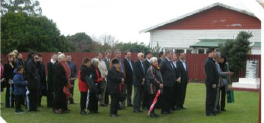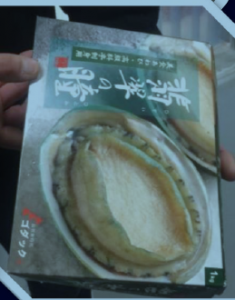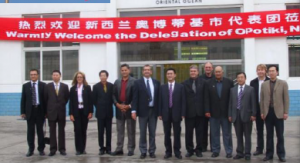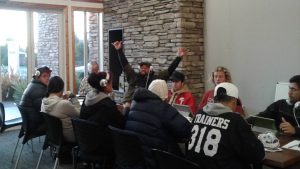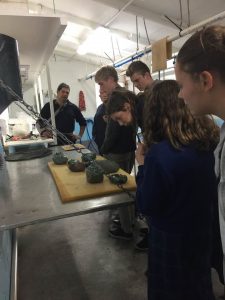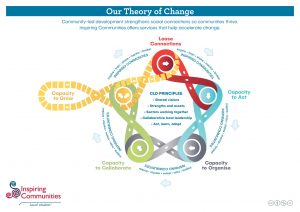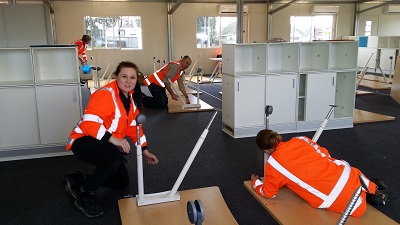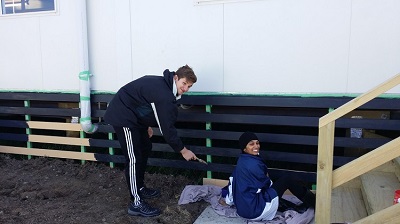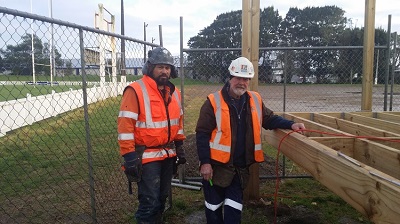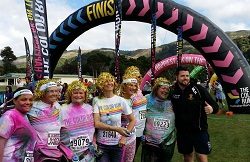Ōpōtiki using their taonga to harbour a dream
Decades ago, some Whakatōhea kaumatua advocated farming the sea, and rebuilding the marine based economy which the Iwi had been renowned for pre-confiscation. At the time there was scepticism – maybe the vision seemed impossible….
Ōpōtiki now has the largest offshore marine farm in New Zealand and local iwi, Te Whakatōhea is the majority shareholder. Over the past 20 years Te Whakatōhea and partners have co invested in research and farming infrastructure to harvest spat and grow mussels. Both are now being produced at extraordinary rates.
It’s now time to fulfil the plans to develop the Ōpōtiki Harbour so that both the farm can be serviced and the mussels processed locally – generating local jobs and wealth. Regional commitment to investment is lined up, awaiting government commitment so that construction can commence.
Ōpōtiki, an eastern Bay of Plenty sea side town resident to nearly 5 thousand, was once considered one of New Zealand’s most deprived communities. The town has had heavy unemployment, decreases in population, and a large dependence on government benefits. Increasingly both locals and outsiders are perceiving it differently. They’re beginning to believe that benefits plus seasonal work in kiwifruit need no longer be the only option for a significant portion of the population.
Through their joint leadership, Te Whakatōhea and the Ōpōtiki District Council have integrated iwi and community-led development approaches to empower their community’s transformation.
Shared local visions drive action and change
Ōpōtiki had a desire for change, they envisioned a community that could be more sustainable: Iwi saw opportunity for economic growth congruent with their values and aspirations, that would lead to job opportunities for their people; the Council saw potential in a sustainable seafood industry, along with other industries enabled by a viable harbour, which would all support the community’s wider vision for change.
Using existing strengths and assets
UTe Whakatōhea has a strong connection to the sea. Traditionally known as enterprising seafarers and coastal traders, their history is closely linked to the ocean. The community saw their vision as an asset, one of great value in rebuilding a vibrant local economy and wellbeing. Layered over this was Ōpōtiki harbour. It had been developed in European settlement times for whaling and coastal trading, and was once a busy, thriving harbour – a connection to both European and Māori heritage.
Many people, groups and sectors working together
MTe Whakatōhea, settled on their vision to develop the marine farm, reached out to multiple groups and organisations to assist. Ōpōtiki District Council, with community support got behind the initiative, taking leadership to develop the Harbour. Getting the marine farm underway and confirming the viability of the harbour development has been complex. Processes with community, iwi, multiple central and local government layers, scientist, researchers, investors and a wide range of businesses. There’s been effort regionally, nationally and internationally over many years and that’s created more relationships and trading opportunities both here and overseas.
The Ōpōtiki Marine Advisory Group, established nearly a decade ago, has been a constant thread at the local level, bringing Council, Te Whakatōhea, marine farm leadership and other business people, to the table, along with funders, the regional council and economic development agency.
Working adaptively, learning informs planning and action
WOver the decades of persistence, patches of progress have been frequently interrupted by knock- backs and road- blocks. Two things stand out. One is a collective determination to keep going, learning from experience and adapting to new circumstances and ideas. The other is the value of diverse skills, knowledge and leadership skills around the tables driving these projects, which means different people and organisations can step up when leadership is needed, and then step back as new challenges and opportunities emerge, demanding other expertise.
Watch Ōpōtiki Mussell Farm on Seven Sharp.
Te Hā o Mātauranga Kaikoura
Te Hā o Mātauranga – Learning in Kaikōura is a community hub. Local people people doing extraordinary things following the 2016 Kaikōura earthquake.
Kaikōura is a small coastal town located on the east coast of the South Island – largely known for its whale watching and tourism economy. Te Hā o Mātauranga – Learning in Kaikōura , opened its doors in March 2017 only 3 months after the 7.8 magnitude earthquake that struck the town the previous November. Operating from what was once Kaikōura ’s museum building, the space has been transformed into a community collective with workshops and educational training.
Talking to Sarah Beardmore the Coordinator of Te Hā o Mātauranga, it’s easy to see the enthusiasm and love the community have for their town.
“Our main ethos is to promote, enable and encourage learning opportunities within the community. With support of the JR McKenzie Trust, MBIE and the Lottery Hurunui Kaikōura Marlborough earthquake relief fund we are building on exciting prospects, while recognising the impact the earthquake has had.”
One example is MBIE’s Curious Mind Fund. “It enabled us to join with University of Canterbury to work with local youth who have become involved in the post earthquake science research that has brought so many scientists to Kaikōura ” Sarah says SKIP has also been involved in funding positive activities for parents of 0 – 5 year olds – one of the activities, a photovoice project designed to share stories about sleep since the earthquake, will culminate in an exhibition in the anniversary week of the earthquake in November.
“But we want to look forward. So we’re running workshops to garner ideas and vision. Megan Courtney and Kindra Douglas from Inspiring Communities’ ran two workshops here recently, helping the community to build on their existing strengths in a sustainable way.”
Community-led principles are also scattered throughout Te Hā o Mātauranga’s approach to recovery and positive change.
Utilising existing strengths and assets
“The issues facing Kaikōura existed pre-earthquake but they are just greater now. The community Is turning a negative situation into something positive. By capitalising on the environment, using our contacts and our community’s strengths we have come together and enabled the community to move forward using tools like education. An afterschool programme for children run by a passionate local, to create crafts from recycled materials has led to new ideas around adults creating items from recycled materials – hopefully for on-selling. Local experts have come forward to support learning – for example a primary school teacher has run reading afternoons for school children and another is running slam poetry workshops. “
Shared local visions drive change
The group and the community as a whole are focusing on upskilling: promoting education across all age groups. “So we encourage external providers to offer training in Kaikōura , but as well, we support locals to share their skills and ideas.” Te Hā’s space has hosted a number of different educational training sessions from a partnership with He Toki, a Ngāi Tahu Māori trades training academy, who ran a 3 week course supporting people getting back into work, to a tertiary level business administration course run by ARA.
Many people, groups and sectors working together
Te Hā o Mātauranga is looking towards the next five years. The goal of the hub is for our Kaikōura families to have the confidence and optimism to make the choices they want to. Sarah reinforced the important role Te Hā is now playing to “connect and enable locals, local and central government agencies, philanthropists, businesses – basically anyone with a role to get us to that goal!
“By growing a culture of learning in Kaikōura and promoting and enabling learning opportunities, we hope to give people the support they need to grow their skills, confidence and capability.”
For more information, see their Facebook page here.
Community Coaching
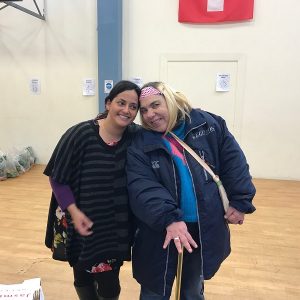 Are you after some support? Would you like four sessions with one of our Coaches?
Are you after some support? Would you like four sessions with one of our Coaches?
Community Coaching with Inspiring Communities
Community-led development (CLD) is hard and often messy. There are no rulebooks or recipes to follow.
Community coaching gives you the space to reflect on and unpack your community-led practice. Understand what’s working, what’s not – figure our why, and what you might next do next.
You set the agenda for what you’d like to work on over 4, one hour sessions during the year.
We can match you with a community coach who will:
- Help you apply CLD principles in your work
- Link you to helpful tools and resources to enhance your practice
- Offer ideas and tactics around the ‘tricky’ stuff
- Enable you to reflect on changes, impacts and learning in real time – community-led development really is ‘learning by doing’
Price – 4 coaching sessions = NGOs $590 plus GST, LG/CG/Business/Funders $890 plus GST
Community Coaching for NGO’s is supported by the Community Leadership Fund
If you’re interested in coaching email us and we can plan what is best for you.
Grants support may be available in different parts of the country.
Do you know others that may be interesting in having a coach? Download and share our information sheet.
Our CLD Election Manifesto, 2017

Inspiring Communities has developed an election Manifesto that outlines the value of Government applying a community-led approach to address the country’s challenges and opportunities. We are asking all political party leaders to put local solutions advocated by local communities more at the centre. We have called for a number of actions that we believe will enable Government to act more as a partner, enabler and co-host rather than prescribing from the top.
We encourage you to spread this manifesto far and wide into the depths of your place – and beyond. Take it, adapt it – meet with your local MP and candidates in this year’s election. Ask them: What their party’s position is on taking a CLD approach to address the challenges faced in communities? Will their party adopt the five CLD principles as outlined in the manifesto? You could tell your story, as a powerful illustration of communities leading change.
Talk about your challenges and opportunities, what works – what needs to change. Ask them to commit to being more innovative so together we generate positive change and sustainable wellbeing for all New Zealanders.
Download Inspiring Communities’ CLD Election Manifesto
We’d love to hear what they say – let us know
Our Theory of Change
Inspiring Communities has developed a new Theory of Change which has evolved from what we have learned from the collective wisdom in communities across Aoteoaroa.
It illustrates how sustainable change happens using a community-led development approach – beginning with the understanding that all communities have the ability to thrive and that effective change is dynamic – there is no perfect ‘straight line’ plan.
The Theory comes with an explanation outlining the phases and transitions between them. Inspiring Communities has developed this Theory to build understanding about how CLD happens and what our role is. We encourage you to share it, and to use it as a resource in your work too. Let us know what you think!
CLD Theory of Change Diagram with explanation 2018
CLD Theory of Change Diagram Only 2018
We invite you to use and share our theory of change – but please attribute Inspiring Communities in all communications.
Sport Waitakere Hub – a community collaborative affair!
By Pauline Butt and the Sport Waitakere team
The situation
In December 2015 Sport Waitakere’s tenancy at the Trusts Arena was terminated, being the organisation delivering sport and recreation to the West Auckland community we suddenly found ourselves without a base. A conversation with the local Waitemata Rugby Club to move a building onto their site became a strong possibility. The Rugby Club had a long term vision of being a sport and recreation hub for the community. This was an ideal place to start fulfilling that vision.
What’s been happening?
And so the journey began… It was decided that a portable building from local West Auckland Company Castle would be our base at the club. Mike from Castle went above and beyond, giving us many hours of fee project management and accommodating our changing needs.
Who’s been involved and how?
We had many people and companies involved. It is worth noting the great diversity of that support. Davenports West Solicitors, Black Box Architects, the City Council, Wendy Jones along with the staff who worked on the internal design and layout, Air New Zealand provided the desks, Zenith, Future IT provided technology support, Markovina moved mountains to obtain long piles at short notice, Chris Baker provided the fibre cable trench, and Urban Security provided a free year’s monitoring. Fulton Hogan West donated many voluntary hours building our decks, ramps and stairs and their office staff built all our furniture and helped us set up our new office.
They also enticed many of their suppliers such as Atlas, Bunnings, Hirepool and Combined Haulage to donate goods and services and encouraged another branch of Fulton Hogan to assist with fixing a long standing drainage issue at the club. As the story grew many others became involved. Ivan provided advice and discounted prices for paint, and even a garden planter box from The Compost Collective.
The final touches to the building were a real community affair with support from the Summerland Primary School caretaker Ian. Ian guided staff to landscape the site in an afternoon, and to paint the building making it look fab!
What’s changed?
Moving to the Waitemata Rugby Club has been positive experience. It’s confirmed our identity, and the vision of being a community hub has started to grow; working closely with the Rugby Club and our other stakeholders to share resources and knowledge. The connections we made during our build has opened many new doors and started many conversations that will help to support the work that we do. We feel part of the community, and the community that helped us build feels like they are part of the building, they often pop in to find out how we are going.
What’s enabled change?
That sense of belonging and having a space to call our own. We have ownership of the building it is not just a place to work, but is a space where we all feel comfortable. The build helped our ever – growing team to connect more with each other, showed each other our strengths and we all feel like we have contributed to make our new home a place we all want to be.
What have you learnt most about CLD through doing it?
Communication has been key to keeping everyone happy and feeling like they are part of it. Not being afraid to ask for help and support and to gain the expertise of those that know what’s best is important. We now know – and others should know this as well – there are people out there that will support and help when the cause is a good one. Above all, we’ve learnt to listen to our community and know that together we can achieve a change in the health and well being of our community.
What’s next?
We’re taking time to reflect on the job that was done, and how lucky we were to have gained such wonderful help. It’s time to look to the future and to start building that community hub with the Waitemata Rugby Club. We made a video of our journey!
The original video link is here.
My Inspiring Community – Halo Whakatane
HALO was born from a shared vision that the community can expand on the success of their volunteer restoration programmes, like the Whakatāne Kiwi Project, taking conservation to the next level and creating a sanctuary for the whole community.
Discovering what works
By Rachel Jury- Recreation Services Manager, Upper Hutt City Council
What is your situation?
Our role is to support people to be more active, because we know that if people are more active it impacts positively not just on their physical health but also on their mental well being. To date we found that agencies, including local government, were rolling out the same types of programmes over and again – with little success. We decided if we were to get more people involved in being active, we needed to act differently. We decided to take on a more community-led focus which would involve making some of those same mistakes, but this time to learn and tell others about it.
What happened
We developed the ALIVE project. ALIVE is aimed at breaking down the barriers that prevent people from participating in regular active recreation. After a few false starts and a number of staff changes, we got underway. We employed a Team Leader and a Coordinator and it took off.
We identified key groups we needed to focus on such as senior citizens, young women, youth and middle-aged men. We wanted the ideas & activities to be created and designed by them, our local residents. We ran focus groups, all designed differently as it worked for them. For example a group of senior citizens were already meeting in the library doing theatre sports every week –we went along and asked them what they did, and what they would want to do, if anything.
A walking group was created with a social aspect; their walk involves having a drink at a café. The walking group grew as participants talked to other locals. And it changed. Some of the walkers decided to cycle instead. We also added to it, to give them a new experience we included Nordic walking which has now become part of some of the group’s activities.
The ALIVE Coordinator had a number of conversations about how we could work alongside young people. Figuring out where the barriers stood, she decided to go beyond mainstream education facilities eventually landing in the Teen Parent Unit (TPU) at Heretaunga College. They welcomed the chance to get back into some kind of organised activity, this recognises the massive change to their lives after baby is born, often they are more isolated. They wanted their baby included on many occasions – something to build activity into both mother and baby’s lives. One example: parent and toddler pool sessions.
Developing from this some of the TPU mums applied for and received grants from our Sporting Chance fund that helps pay the costs of organised sports, so they were re-engaging in sport.
Adding more value is the greater engagement between the mainstream school and the TPU – where they never met before, they are now coordinating events together.
We are ow also talking to the Marae, and a local youth worker to research new options.
The change we have noticed
We have noticed that our goal of increasing participation in physical activity through our local residents has spread to other aspects; social engagement has grown for instance. The walking group now meet about 3 times a week. Local residents are re-engaging them with their communities.
There are natural leaders that just need support to step into leadership. In one case we identified a person from one of our groups and gave her leadership training, she now runs her activity.
We haven’t got as many men involved as we would like and we have noted that is most likely because we need to find a different way again of working alongside them.
What we’ve learned
Doing this well takes time. Having the right people in the right places is vital. One size doesn’t fit all so having people that are passionate and comfortable working with locals, that they work to their strengths and feel part of the group. This may mean having a number of coordinators vs one but it makes a huge difference.
As a sector we make quite a few assumptions. We talk about money being the biggest barrier to getting people active but we need to re-define this. Walking doesn’t cost money. We can’t just assume what the barriers are. We need to break down stereotypes, find out what our local residents want and then get alongside them and do it.
We know there is a lot more we could notice and learn from ALIVE. We are now undertaking a gap analysis which will inform a wider evaluation of the programme enabling us to adapt it and make it even better.
The best thing we did was ask the people what work for them – we didn’t assume what they wanted.
Read more about how the team at the Upper Hutt City Council is helping the community to become more active.
My Inspiring Community- South Alive
South Alive is a South Invercargill urban rejuvenation group, that is led by the community for the community. Their goal is to create a community that is proud of where they live and work. Here is their story-My Inspiring Community-South Alive
Using ‘It’s not OK’ at Rugby League
By He Tauaa Rugby League Club Acting President Fipe Fa’amoe.
The situation
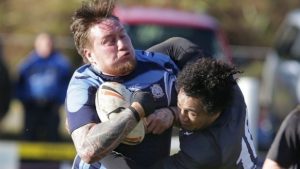 He Tauaa Rugby League club in Southland has been around since 1983. “He Tauaa” to the old Maori people, means, ‘A well drilled and organised war party of men, who would raid other tribes to show their strength and bring back the spoils.’
He Tauaa Rugby League club in Southland has been around since 1983. “He Tauaa” to the old Maori people, means, ‘A well drilled and organised war party of men, who would raid other tribes to show their strength and bring back the spoils.’
We are doing well on the field – most recently and what may be our greatest achievement – is winning the Southland Championship back to back four years running.
Being well drilled and organised, can only come from hard training, connectedness between all members and providing an environment that encourages positive behaviour.
We wanted to address a number of incidents that were taking place during the games. Back chatting to the referees, abusive comments from the side line towards players and bad attitudes. Often not from our team but none the less change was needed.
So when the opportunity to be part of the New Zealand Rugby League (NZRL) “It’s more than a Game” initiative, which promotes healthy living, positive behaviour and building stronger individuals, families and communities – we jumped at the chance.
What’s happening
We became the Southland Champion Club for the ‘It’s Not Ok’ initiative for 2016. An informative day with stall holders and guest speakers providing vital information.
Banners and flags supporting the campaign have flown freely at the games. Two club members volunteered to be our Club Champions, when there was inappropriate side-line behaviour they approached the players and supporters concerned and asked them to calm down and be more positive. The odd negative comment is quickly stamped on. The coaching team play a big role as they continually drive into the players that they need to display a good attitude and positive behaviour. This occurs at training, before and during their games. If there are any issues that require intervention, these are discussed and dealt with by our Committee.
One of our Club Champions Chris Perriam has been involved in rugby league for 29 years – 23 of them with He Tauaa. He says it’s been an honour and a privilege to represent the club as one of the Champions.
“This has been the only campaign that the Southland Rugby League community has been able to get behind that effects nearly all of us.
Growing up, family violence was a common occurrence in our house so to be a club champion was something close to the heart. I put my hand up because I know we all have our struggles in life, but there are people who can help; people who you can talk too if it is easier than talking to those closest to you. This campaign was more about letting the community know we care and to let them know that help is as close as they might think.”
The change we’ve noticed
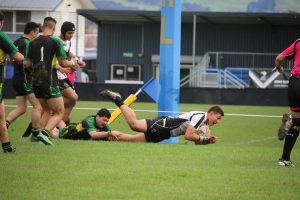 The back chatting from our team on the field this season has notably reduced in our club and side line behaviour has improved. This has been noticed by our supporters and members from other clubs. Support for this initiative has been amazing. Our players, their families, friends, Southern Zone Rugby League, our sponsors and members of the Family Violence team all attended the launch.
The back chatting from our team on the field this season has notably reduced in our club and side line behaviour has improved. This has been noticed by our supporters and members from other clubs. Support for this initiative has been amazing. Our players, their families, friends, Southern Zone Rugby League, our sponsors and members of the Family Violence team all attended the launch.
What enabled change?
One of the club champions Leona Notoa says that small things like flags, posters and tee shirts have been a constant reminder to people. Being part of the campaign meant people felt more confident to yell out and stop anything that was negative or unnecessary – referring to the slogan, “It’s not OK. Although there is still the constant banter between teams and spectators the reminder was looming and it sparked conversations.
What we’ve learned
The strength of our club is that we are whanau orientated and supportive of each other. We understand that each of us have a role to play to ensure that we are successful on and off the field. If we can continue with a positive attitude, this filters to our members and their families.
What’s next
We have certainly got off to a good start as the club won the 2016 NZRL Grassroots club of the year award for our work with the It’s Not OK campaign – we are all stoked!
We have connected with a local musician who has agreed to create a song and music specific to He Tauaa. We are hoping that the song will be ready early next year when we hold our next big event for the it not ok campaign.
Chris has produced a video:

